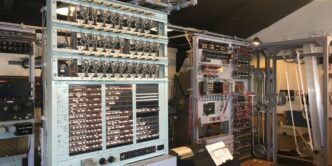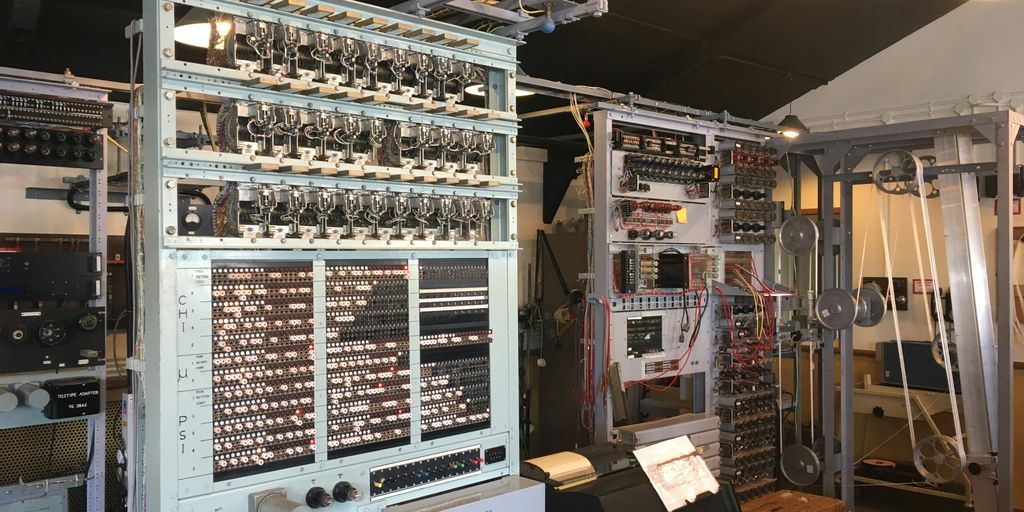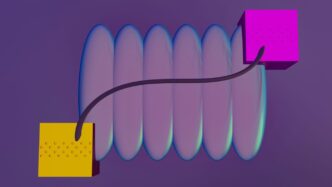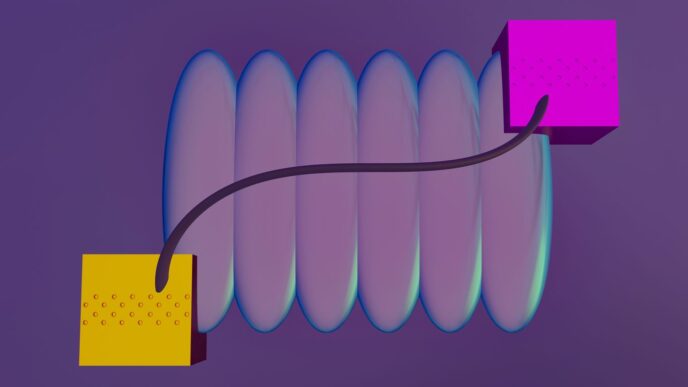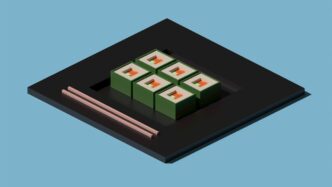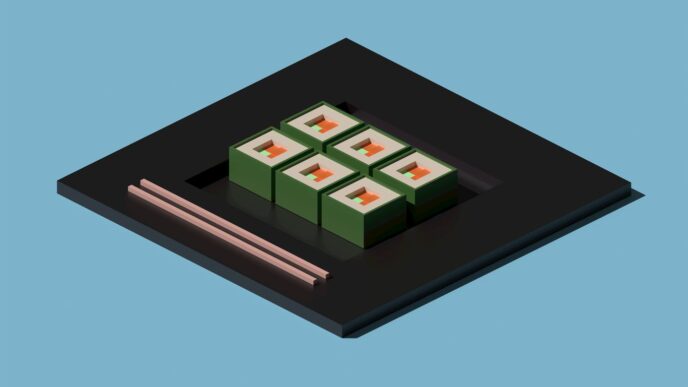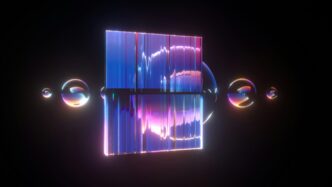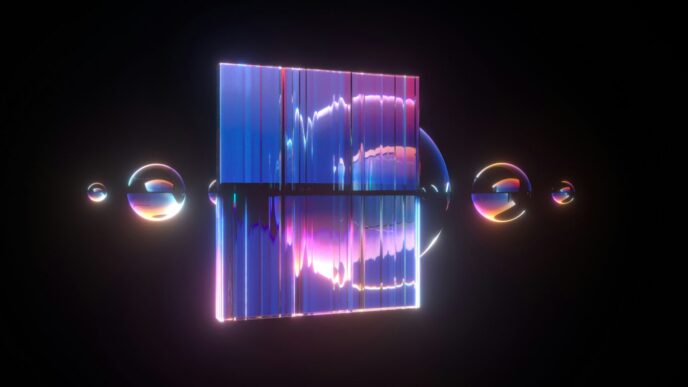The world of quantum computing is buzzing, and a big part of that buzz is about something called the NISQ era. NISQ stands for Noisy Intermediate-Scale Quantum. Basically, we’re talking about quantum computers that aren’t perfect yet – they have some noise, and they’re not super huge. But even with these limits, they’re showing us some pretty cool stuff. This article will look at the tricky parts of working with these NISQ devices and also the exciting chances they give us.
Key Takeaways
- The NISQ era means quantum computers are still a bit noisy and not super big, but they’re here and doing things.
- A big challenge is dealing with all the noise and errors that happen in these quantum systems.
- Even with the problems, NISQ devices can help us in areas like making new materials and understanding chemistry.
- Scientists are always working on new ways to fix errors and make these quantum computers better.
- The goal is to get to a point where quantum computers can solve problems that regular computers just can’t handle.
Understanding the NISQ Era in Quantum Computing

Alright, let’s talk about the NISQ era. It’s a weird time in quantum computing, kind of like being a teenager – full of potential, but also super awkward and messy. We’re not quite at the point where quantum computers are going to solve all our problems, but we’re also not just playing around with theories anymore. It’s a middle ground, and it’s important to understand what that means.
Defining Noisy Intermediate-Scale Quantum Devices
So, what exactly are NISQ devices? The acronym stands for Noisy Intermediate-Scale Quantum. "Noisy" because they’re prone to errors – think of static on an old radio. "Intermediate-Scale" because they have a limited number of qubits, usually somewhere between 50 and a few hundred. That’s not enough to do the really big, game-changing calculations we dream about, but it’s enough to start exploring some interesting stuff. These devices represent a crucial step towards fault-tolerant quantum computers. They are useful for quantum simulations.
The Significance of Quantum Supremacy
You’ve probably heard about quantum supremacy. It’s basically the point where a quantum computer can do something that a classical computer can’t do in any reasonable amount of time. Google claimed to have achieved it a few years back, but it’s still a bit of a controversial topic. Some argue that the problem they solved was specifically designed for quantum computers and doesn’t have much real-world value. Others say it’s a major milestone. Either way, it shows that quantum computers are starting to get powerful enough to outperform classical computers in certain areas. It’s important to note that quantum supremacy doesn’t automatically mean quantum advantage.
The Pursuit of Quantum Advantage
Okay, so quantum supremacy is cool, but what we really want is quantum advantage. That’s when a quantum computer can solve a practical problem faster or better than the best classical computer. Think drug discovery, materials science, or financial modeling. We’re not there yet, but that’s what everyone in the field is working towards. The NISQ era is all about finding those problems where we can demonstrate a real, tangible benefit from using quantum computers, even with all their limitations. Error mitigation techniques are essential for reliable quantum computing. It’s like trying to build a race car out of spare parts – it might not be perfect, but if it can beat the other cars, that’s what matters. The scalability of NISQ devices is a key factor in achieving quantum advantage.
Core Challenges in NISQ Quantum Algorithms
NISQ devices, while promising, come with their own set of headaches. It’s not all sunshine and quantum rainbows. We’re talking about real limitations that researchers and developers are actively trying to overcome. The main issues revolve around noise, scalability, and the difficulty of creating algorithms that actually work well on these imperfect machines.
Mitigating Noise and Errors in NISQ Devices
Okay, so imagine trying to build a sandcastle, but the tide keeps washing away parts of it. That’s kind of what it’s like dealing with noise in NISQ computers. These errors pop up because of all sorts of things, like tiny vibrations or fluctuations in temperature. It’s a constant battle to keep the quantum information stable. error mitigation techniques are used to lessen noise, though these methods introduce computational challenges.
- One approach is to use quantum error correction codes, which are like adding extra layers of protection to your data. The problem? They need a ton of extra qubits, which we don’t have in abundance right now.
- Another tactic is error mitigation, where you try to estimate the errors and then subtract them out. It’s like trying to remove the blur from a blurry photo – tricky, but sometimes it works.
- There’s also the issue of hardware noise. Imperfections in the qubits themselves can cause errors. It’s like trying to build a house with slightly crooked bricks. You can still build something, but it might not be as strong or stable as you’d like.
Addressing Limited Scalability and Qubit Coherence
Think of it this way: you start with a small group of friends, and it’s easy to keep everyone connected and talking. But as the group grows, it becomes harder and harder to manage. That’s what happens with qubits. As you add more, the whole system becomes more complex, and it’s harder to keep the qubits "coherent," meaning they lose their quantum properties faster. The scalability of NISQ devices is a big problem.
- Qubit coherence is a huge deal. It’s basically how long a qubit can maintain its quantum state before it collapses. Right now, coherence times are pretty short, which limits the complexity of the computations we can do.
- Another challenge is connectivity. Not all qubits can directly interact with each other. It’s like trying to send a message across a network where some computers aren’t directly connected. You have to route the message through other computers, which adds time and complexity.
- The more qubits you add, the harder it is to control them precisely. It’s like trying to conduct an orchestra with a million instruments – a slight mistake in one instrument can throw off the whole performance.
Implementing Robust Quantum Algorithms
So, you’ve got this fancy quantum computer, but now you need to figure out what to do with it. Writing quantum algorithms that can actually solve useful problems on NISQ devices is a major challenge. It’s not just about translating classical algorithms into quantum code; it’s about designing algorithms that are specifically tailored to the strengths (and weaknesses) of these machines.
- One issue is that quantum algorithms often require a lot of qubits and long coherence times, which, as we’ve discussed, are in short supply on NISQ devices.
- Another problem is that many quantum algorithms are very sensitive to noise. A small error can quickly propagate and ruin the entire computation.
- Finally, there’s the challenge of verifying the results. Because quantum computations are probabilistic, it can be hard to tell if you’ve actually found the right answer. You might need to run the algorithm many times and then use classical post-processing to analyze the results.
Overcoming Hardware Limitations in the nisq era
NISQ devices, while promising, come with a hefty set of hardware limitations. We’re talking about noise, limited qubit counts, and short coherence times. It’s like trying to build a skyscraper with LEGOs – challenging, to say the least. The key is finding clever ways to work around these constraints until the hardware catches up.
Tackling Hardware Noise and Imperfections
Hardware noise is a big problem. It stems from imperfections in the qubits themselves and the control mechanisms. Think of it like a slightly out-of-tune instrument; the notes are close, but not quite right. To deal with this, researchers are exploring:
- Improved qubit fabrication techniques: Making qubits more uniform and less susceptible to errors.
- Pulse shaping: Fine-tuning the control signals to minimize unwanted transitions.
- Error mitigation strategies: Trying to cancel out the noise effects after the computation, like noise reduction by symmetry verification.
Combating Environmental Interference
NISQ devices are incredibly sensitive to their environment. Things like temperature fluctuations, electromagnetic radiation, and even vibrations can mess with the qubits. It’s like trying to have a quiet conversation at a rock concert. Here’s what’s being done:
- Shielding: Encasing the qubits in multiple layers of shielding to block external interference.
- Cryogenic cooling: Cooling the devices to extremely low temperatures (close to absolute zero) to reduce thermal noise. Canada’s cold climate is a plus for crypto mining, but it’s not quite cold enough for quantum computing!
- Active stabilization: Using feedback loops to compensate for environmental changes in real-time.
Navigating Limited Qubit Connectivity
Not all qubits can directly interact with each other. This limited connectivity makes it difficult to implement certain quantum algorithms. It’s like trying to build a complex circuit with only a few wires. Solutions include:
- Qubit routing: Cleverly rearranging the quantum circuit to minimize the need for long-range interactions.
- All-to-all connectivity architectures: Developing new hardware architectures where every qubit can directly interact with every other qubit (though this is still a ways off).
- Algorithm redesign: Adapting quantum algorithms to better suit the available qubit connectivity. This often involves trade-offs between circuit depth and qubit count.
Opportunities in NISQ Quantum Algorithms
Okay, so NISQ isn’t perfect. We know that. But it’s not all doom and gloom! There are actually some pretty cool opportunities popping up, even with the limitations we’re dealing with. It’s like finding a silver lining in a noisy, error-prone cloud. Let’s look at some of the exciting stuff happening.
Revolutionizing Chemistry and Materials Science
NISQ devices have the potential to seriously shake up chemistry and materials science. I mean, imagine being able to simulate complex chemical reactions or design materials with specific properties before even stepping into a lab. That’s the kind of power we’re talking about. Think about it: faster drug discovery, better batteries, stronger materials. The possibilities are pretty wild. For example, the VQE algorithm has shown promise in calculating the ground state energy of molecules.
Advancements in Error Mitigation Techniques
Okay, so NISQ devices are noisy. We get it. But people are working hard to fix that! Error mitigation is a huge area of research, and we’re seeing some real progress. It’s not full-blown error correction (yet!), but these techniques help us get more reliable results from our quantum computations, even with all the noise. Think of it like noise-canceling headphones for your quantum computer. Here are some examples:
- Symmetry verification: Reduces noise by exploiting symmetries in the problem.
- Classical post-processing: Cleans up the results after the quantum computation.
- Extrapolation methods: Estimate what the result would be with zero noise.
Developing New Quantum Algorithms for NISQ Devices
Instead of trying to force algorithms designed for fault-tolerant quantum computers onto NISQ devices, people are creating new algorithms specifically tailored for the limitations of NISQ. These algorithms are often hybrid quantum-classical, meaning they use both a quantum computer and a classical computer to solve a problem. It’s all about finding clever ways to use the limited resources we have to get the best possible results. This includes things like:
- Variational Quantum Eigensolver (VQE) for finding the ground state energy of molecules.
- Quantum Approximate Optimization Algorithm (QAOA) for solving combinatorial optimization problems.
- Quantum Machine Learning algorithms designed to work with noisy data.
Key Applications of NISQ Devices
NISQ devices, while not perfect, are already showing promise in specific areas. It’s not about replacing classical computers entirely just yet, but rather finding niche problems where these early quantum systems can offer something unique.
Simulating Complex Chemical Reactions
One of the most exciting areas is in chemistry. NISQ devices can be used to simulate chemical reactions that are too complex for even the most powerful classical computers. Think about designing new catalysts or understanding reaction mechanisms in detail. It’s not going to solve every problem overnight, but it opens up new possibilities. For example, simulating the behavior of molecules during a reaction can help us design more efficient industrial processes. This is a big deal because it could lead to less waste and lower energy consumption. It’s like having a virtual lab where we can test out different scenarios before ever stepping into a real one.
Designing Materials with Specific Properties
Similar to chemistry, materials science stands to gain a lot from NISQ devices. Imagine being able to design materials with specific properties, like high strength, low weight, or unique electronic characteristics. This could revolutionize industries from aerospace to electronics. Instead of relying on trial and error, we can use quantum simulations to predict how different materials will behave. This could lead to the discovery of new materials with properties we never thought possible. It’s like having a superpower that allows us to see into the atomic structure of materials and tweak them to our liking. This could lead to lighter, stronger, and more efficient products in the future. The challenges in NISQ quantum algorithms are real, but the potential payoff is huge.
Exploring Variational Quantum Eigensolver (VQE) Applications
The Variational Quantum Eigensolver, or VQE, is a hybrid quantum-classical algorithm that’s particularly well-suited for NISQ devices. It’s used to find the ground state energy of molecules, which is a fundamental problem in quantum chemistry. VQE works by using a quantum computer to prepare a trial wave function and then uses a classical computer to optimize the parameters of that wave function. This process is repeated until the ground state energy is found. VQE is not perfect, but it’s one of the most promising algorithms for NISQ devices. It’s like having a clever way to get the most out of these early quantum systems. VQE has applications in:
- Drug discovery
- Materials design
- Fundamental physics
Future Prospects for NISQ Devices and Algorithms
Okay, so where are we headed with all this NISQ stuff? It’s a pretty exciting time, even if things are still kinda messy. We’re not at fault-tolerant quantum computers yet, but there’s a lot of work happening to push the boundaries of what we can do with these intermediate-scale, noisy machines. Let’s look at some of the things on the horizon.
Innovations in Qubit Technology
Honestly, a lot of the future depends on making better qubits. Right now, we’re using things like superconducting circuits and trapped ions, but there’s still tons of room for improvement. The goal is to make qubits that are more stable and less susceptible to noise. Think about it: if we could just keep those qubits humming along for longer without messing up, we could run way more complex algorithms. People are exploring all sorts of new materials and designs to try and get there. It’s a bit like the early days of regular computers – everyone’s trying different things to see what sticks. For example, there’s a lot of buzz around topological qubits, which are supposed to be inherently more resistant to noise. If that pans out, it could be a game-changer.
Enhancing Scalability and Coherence Times
Scalability and coherence are the big bottlenecks right now. We need more qubits, and we need them to stay coherent for longer. It’s a tough combo. Right now, we’re talking about systems with digital PCR in the range of 50-100 qubits, but to really tackle some of the big problems, we’re going to need thousands, maybe even millions. And those qubits need to maintain their quantum state for long enough to actually run a computation. There are a few different approaches people are taking:
- Improved materials: Finding materials that minimize interference and decoherence.
- Better control systems: Developing more precise ways to manipulate and control qubits.
- Error mitigation techniques: Figuring out how to correct errors in real-time, without needing full-blown quantum error correction.
The Path to More Complex Quantum Computations
Ultimately, all this is about doing more complex stuff. We want to be able to simulate molecules, design new materials, and maybe even break some encryption. But to get there, we need better algorithms that are tailored to the limitations of NISQ devices. That means things like variational quantum algorithms, which try to find approximate solutions to problems by iteratively tweaking parameters. It’s kind of like a feedback loop, where you run a quantum computation, measure the result, and then adjust the parameters to get a better answer next time. It’s not perfect, but it’s a way to get something useful out of these noisy machines. Plus, there’s a lot of work going into developing new quantum algorithms that are specifically designed to be resilient to noise. It’s a whole new field, and it’s moving pretty fast. The future of quantum computing is looking bright, even if it’s still a bit hazy.
Evaluating Performance in the NISQ Era
It’s a tricky thing, figuring out how well these early quantum computers are actually doing. We can’t just use the same old benchmarks we use for regular computers. It’s a whole new ballgame, and we’re still figuring out the rules.
Measuring Quantum Computer Performance
So, how do we even begin to measure how good a quantum computer is? Well, it’s not as simple as clock speed or memory. We need to think about things like:
- Qubit Count: How many qubits does the computer have? More isn’t always better, but it’s a start.
- Coherence Time: How long can the qubits maintain their quantum state before decoherence kicks in and messes everything up? Longer is definitely better.
- Gate Fidelity: How accurate are the quantum gates? Are they doing what they’re supposed to do, or are they introducing errors? High fidelity is crucial.
- Connectivity: How well connected are the qubits? Can they easily interact with each other, or are there limitations? Good connectivity is important for complex algorithms.
These factors all play a role, and it’s not always easy to combine them into a single, simple metric. New theoretical tools are needed to benchmark the performance and power of NISQ devices.
The Importance of Noise Reduction
Noise is the enemy of quantum computing. It’s what makes these NISQ devices so… well, NISQ-y. If we can reduce the noise, we can get better results, even with the same hardware. There are a few ways to tackle this:
- Improved Shielding: Better isolation from the environment can reduce external noise.
- Error Mitigation Techniques: Clever algorithms can help to correct for errors that do occur.
- Better Calibration: More precise control over the qubits can minimize errors in the first place.
Noise reduction is a constant battle, but it’s one that’s worth fighting. The less noise, the more useful these quantum computers become. It’s important to consider the scalability of NISQ devices.
Benchmarking Quantum Algorithms
Finally, we need to benchmark the algorithms themselves. How well do they perform on these noisy devices? Do they actually give us an advantage over classical algorithms? This is where things get really interesting. We need to:
- Develop New Benchmarks: Existing benchmarks for classical computers don’t always translate well to quantum computers. We need new benchmarks that are specifically designed for quantum algorithms.
- Compare to Classical Algorithms: It’s not enough for a quantum algorithm to just work. It needs to be better than the best classical algorithm for the same problem.
- Consider Resource Requirements: How many qubits does the algorithm need? How long does it take to run? These factors are important for determining the overall practicality of the algorithm.
Benchmarking is an ongoing process, but it’s essential for understanding the true potential of quantum computing in the NISQ era. We need to keep pushing the boundaries and finding new ways to measure and improve performance. The development of new quantum algorithms is key to unlocking the full potential of NISQ devices.
Conclusion
So, what’s the big takeaway here? Well, the NISQ era, with all its quirks, is a pretty interesting spot for quantum computing. Sure, we’ve got these noisy machines and they’re not huge yet, which makes things a bit tricky. But on the flip side, folks are coming up with clever ways to deal with those errors, and there are some cool ideas for how these machines could help us out, especially in areas like chemistry and making new materials. As people keep working on making these NISQ devices better, we’re probably going to see some really neat stuff happen in quantum computing. It’s like we’re just getting started, and the future looks pretty exciting.
Frequently Asked Questions
What does “NISQ Era” mean in simple terms?
The NISQ (Noisy Intermediate-Scale Quantum) era refers to the current stage of quantum computing. It means we have quantum computers that are not perfect yet. They have a medium number of ‘qubits’ (the basic building blocks of quantum computers), usually between 50 and 100. The ‘noisy’ part means these qubits are easily affected by their surroundings, leading to errors. So, we’re in a time where quantum computers are powerful but still a bit messy.
What are the biggest problems with today’s NISQ quantum computers?
The main challenges are dealing with noise and errors, which can mess up calculations. Also, it’s hard to make these computers bigger (scalability) and keep the qubits stable for long enough to do complex tasks. Imagine trying to build a very tall tower with shaky blocks – it’s tough to keep it from falling!
What can NISQ quantum computers actually do right now?
Even with their limits, NISQ computers are showing promise in certain areas. For example, they can help scientists understand how molecules work, which could lead to new medicines or materials. They are also good for solving specific math problems that regular computers struggle with.
How are scientists trying to make NISQ computers better?
Scientists are working on clever ways to fix errors and reduce noise, like using special codes or smart computer tricks after the calculation is done. They are also trying to make qubits more stable and connect them better so they can do more complex jobs.
What’s the difference between ‘quantum supremacy’ and ‘quantum advantage’?
Quantum supremacy is when a quantum computer solves a problem that a supercomputer can’t solve in a reasonable amount of time. Quantum advantage is a step further: it’s when a quantum computer solves a *useful* real-world problem faster than any regular computer. We’ve seen some examples of supremacy, but achieving true quantum advantage for practical uses is the next big goal.
What’s next for NISQ technology and quantum computing?
The future looks exciting! We expect to see qubits that are even better and more stable. This will allow us to build bigger and more powerful quantum computers that can tackle even harder problems, moving us closer to a future where quantum computing changes many parts of our lives.

